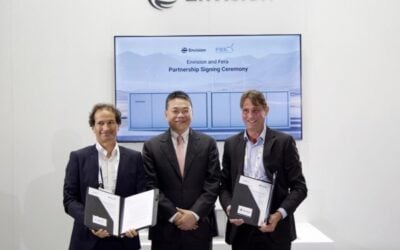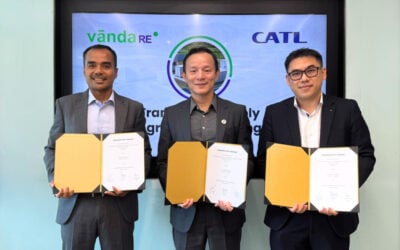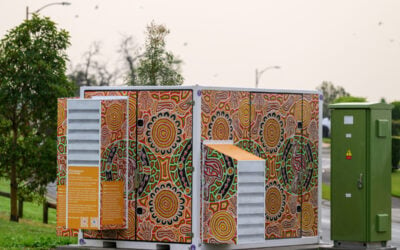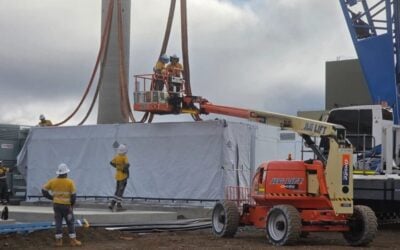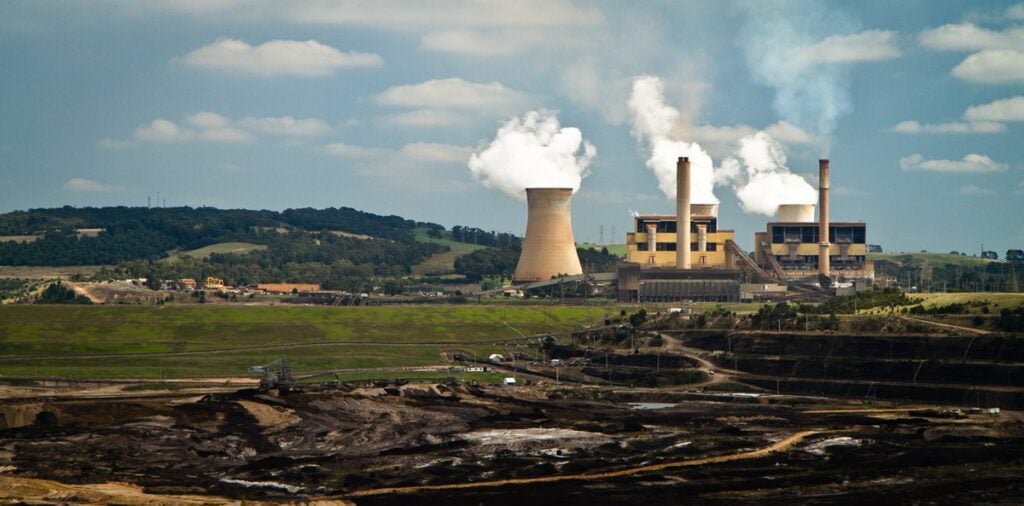
Utility EnergyAustralia has filed planning applications for Australia’s first four-hour duration large-scale lithium battery energy storage system (BESS), in Victoria’s Latrobe Valley.
The energy retailer-generator said last week that it has submitted documents to the state’s Department of Environment, Land, Water and Planning for the 350MW/1,400MWh BESS.
Enjoy 12 months of exclusive analysis
- Regular insight and analysis of the industry’s biggest developments
- In-depth interviews with the industry’s leading figures
- Annual digital subscription to the PV Tech Power journal
- Discounts on Solar Media’s portfolio of events, in-person and virtual
Called Wooreen Energy Storage System, the project is being built in part to replace EnergyAustralia’s 1,450MW Yallourn coal-fired power station, scheduled for retirement in mid-2028.
Yallourn burns around 18 million tonnes of coal annually, contributing about 22% of Victoria’s electricity demand, but also contributing about two-thirds of EnergyAustralia’s total emissions and costing millions to run. The utility is targeting net zero emissions status by 2050.
EnergyAustralia announced the battery project in 2021. As reported by Energy-Storage.news at the time of that announcement, the company expects to have it in service before the end of 2026 to help maintain reliable electricity supplies and the stable operation of the grid.
Wooreen Energy Storage System will be built at the site of another EnergyAustralia thermal power plant, the 460MW Jeeralang gas peaker plant in the vicinity of Hazelwood North, a small town in the Latrobe Valley.
As with a growing number of large-scale battery projects in Australia and other markets like the US, where legacy thermal power plant sites have been identified as optimal locations, EnergyAustralia said it will be leverage existing electrical infrastructure at the gas power plant, including grid interconnection point and associated transmission and distribution infrastructure.
At 350MW/1,400MWh, it would be close in size to the world’s biggest BESS today, Moss Landing Energy Storage Facility in California, which is 400MW/1,600MWh. Australia’s biggest BESS to date is the 350MW/450MWh Victorian Big Battery, although other larger projects are in development, such as the Waratah Super Battery in New South Wales. Just a few days ago developer-investor Equis said it plans to build a 1.2GW/2.4GWh BESS, also in Victoria, at a large-scale mixed technology renewables hub.
Wooreen is certainly a step-change up in duration for the Australian market, with the market only recently starting to see two-hour duration battery storage after a buildout period of one-hour and shorter duration projects.
This echoes the trend seen in leading BESS adoption markets like California or the UK and Ireland. In those markets, project durations have lengthened as more battery systems come online, eroding the share of the market that high power, short duration application systems can corner.
Meanwhile the project also aims to revive the economic fortunes of the Latrobe Valley and wider Gippsland region of Victoria. The Latrobe Valley has numerous power generation sites that have stood for many years – Yallourn itself was built in the 1970s but a power plant has stood on the site since 1921.
Another major retailer-generator, AGL, has said it wants to build a 200MW large-scale BESS in the valley at the site of Loy Yang, a 2,225MW coal power plant. Yallourn and Loy Yang are both sited adjacent to mining operations that fuel the plants.
AGL got planning approval from the Department of Environment, Water, Land and Planning for its project, which would also be four-hour duration (800MWh), in November 2021. AGL is now assessing the economics and viability of its project, meaning it and EnergyAustralia could be locked in a race to call the first four-hour grid-scale project in the country their own.
In October, EnergyAustralia said it is planning a 500MW BESS at Mount Piper, a 1,400MW black coal power plant it owns in New South Wales (NSW), which again the company hopes can be commissioned before the end of 2026.
Energy-Storage.news’ publisher Solar Media will host the 1st Energy Storage Summit Asia, 11-12 July 2023 in Singapore. The event will help give clarity on this nascent, yet quickly growing market, bringing together a community of credible independent generators, policymakers, banks, funds, off-takers and technology providers. For more information, go to the website.

